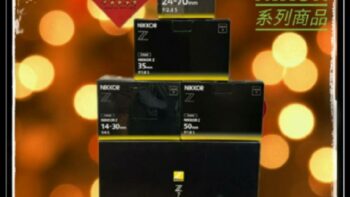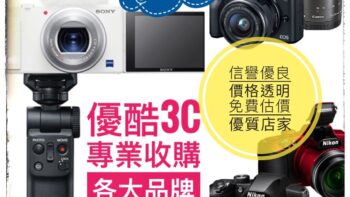高價 canon鏡頭收購 請立即與我們聯絡 收購canonRF系列,RF定焦,RF廣角,RF旅遊,收購EF-M系列,收購大三元,小三元,收購L鏡,收購Marco,二手鏡頭,全新鏡頭,鏡頭買賣,鏡頭收購 Read More ...

收購相機及鏡頭 您用不到相機鏡頭 不論新舊,都可以換現金 陪您走過每個黃金歲月的年頭,現在因為家庭或工作總總因素,這些可愛的相機及鏡頭寶貝們,除了躺在倉庫,安靜在防潮箱等候主人帶它們出勤之外,應該可以有個兩全其美的辦法"就是讓給有緣人",讓它再度發揮存在地球上的價值吧!

高價 canon鏡頭收購 請立即與我們聯絡 收購canonRF系列,RF定焦,RF廣角,RF旅遊,收購EF-M系列,收購大三元,小三元,收購L鏡,收購Marco,二手鏡頭,全新鏡頭,鏡頭買賣,鏡頭收購 Read More ...

線上估價 我們是專業的3C收購,高價收購您不用的3C產品,價格好不怕您比較!! 我們專業經營各項3C高價回收,清運協助,可開立單據,多通路多管道,非坊間垃圾回收價,價格不怕您比較,歡迎企業戶汰舊換新, Read More ...

線上估價 鏡頭收購 canon 鏡頭收購,二手鏡頭收購,全新鏡頭收購,收購nikon鏡頭,收購sony鏡頭,收購leica鏡頭,收購fujifilm鏡頭,收購panasonic鏡頭,收購zeiss鏡頭 Read More ...

高價 nikon鏡頭收購 請立即與我們聯絡 收購nikone鏡頭,收購nikon z,收購nikon z 40mm,z 50mm,z 35mm,z 20mm,z 24mm,z 28mm,收購af-s Read More ...

SONY鏡頭收購 全新SONY鏡頭收購 E-Mount鏡頭,FE 24-70MM,VCL-ECU2,FE 24-105MM,E PZ 18-105MM,FE 16-35MM,FE 35MM FE 70 Read More ...

PENTAX 鏡頭收購 標準定焦 (35-50) 廣角定焦 (21-31) 望遠定焦 (118-200) 中望遠定焦 (55-100) 超望遠定焦 (236-560) 廣角變焦 (20-82.5) 超 Read More ...
估價鏡頭收購
op support for the Pi hardware family.
In brief, the Pi 400 is a slightly faster version of the 4GiB Pi 4 that ships preassembled in a small, wedge-shaped chassis with integrated keyboard. The new model directly targets desktop replacement use and can be purchased solo for $70 or as a full kit (as seen above) for $100.
The new form factor—which has apparently been in the works ever since the introduction of the official Raspberry Pi keyboard—addresses and enthusiastically supports the Pi 4’s growing use case as a replacement or alternative for the traditional desktop PC. Upton told Ars that the Pi 400 is about 20-percent faster than the Pi 4; it has largely the same components under the hood but on a differently laid-out board, and its BCM2711 CPU is clocked a touch higher than the BCM2711 in the Pi 4.
The Pi 400 is simple to set up—all you need is its USB-C power cord, the included HDMI cord for video out, and the included mouse.
Jim Salter
The Pi 400’s keyboard layout is largely sane, aside from compressed arrow keys—but the whole thing is roughly four inches narrower than the corresponding part of a standard desktop keyboard.
Jim Salter
From the left: 40-pin GPIO header, microSD card slot, two micro-HDMI output ports, a USB-C power port, two USB 3.0 type-A ports and one USB 2.0 type-A port, Gigabit Ethernet port, Kensington lock slot.
Jim Salter
The visible hump on the underside of the Pi4 provides a comfortable typing angle and clearance for the passive-cooling vents.
Jim Salter
Unboxed and plugged in, the Pi 400 is functional but not particularly lovely. On the plus side, the integrated keyboard means fewer cables to deal with. Unfortunately, the remaining cables are unusually likely to snarl and look a bit feral. They are both stiffer and shorter than I’d prefer in an ideal world, making it difficult to impossible to end up with a setup that doesn’t look like a rat’s nest. The red cable for the mouse clashes pretty violently with the off-white cables for USB-C power and micro-HDMI out, which doesn’t help any.
That said, it’s important to remember that the entire kit retails for $100. Within the limits of the Pi 400’s very generous price, it’s not really fair to complain too hard about a few aesthetic gaffes here and there! Consumers with a few extra dollars to spend might want to consider replacing the Pi 400’s mouse with something a bit more functional, though… and a full-sized keyboard might not be a bad idea while you’re at it.
The integrated keyboard is functional but noticeably narrower than a standard keyboard. I’m not generally sensitive to variations in keyboard layout due to a long career involving Other People’s Computers in large numbers, but I was plagued with constant mistyping problems the entire time I tested the Pi 400.
Advertisement
It’s also worth noting that, while the Pi 400 supports dual displays, it does so with micro-HDMI ports, not full-sized ones—and it ships with a single cable. You’ll need an extra cable if you want to use your Pi 400 with dual displays—and since it ships with a micro-HDMI to HDMI cable, not an adapter, things will get complicated if you want to use it with, e.g., portable LED displays that have off-sized ports themselves.
Finally, there’s no 3.5mm audio jack on the Pi—if you’ve got it hooked to a television or a monitor with speakers, it can deliver audio over HDMI; otherwise you’ll need a supported USB audio device. I tested with an inexpensive USB gaming headset, which worked fine.
Impressions—Raspberry Pi OS
Raspberry Pi OS suspects you might be using it on a television, not a proper monitor—so it starts out with significant overscan boundaries by default.
Jim Salter
The overscan goes away after a reboot, if you tell the setup dialog, “Yes, I see big black borders.”
Jim Salter
We tried playing a 4K 60fps YouTube video on the Pi 400. Even at 1080p, not 4k, it dropped a lot of frames.
Jim Salter
Checking CPU utilization, we see that the system’s pretty much pegged while trying to play this 60fps video, even at 720p.
Jim Salter
I began testing the Pi 400 using its native Raspberry Pi OS Linux distribution—which is basically Debian with LXDE and a lot of middleware optimizing it for the Pi. Unfortunately, there’s almost nothing in the way of standard benchmarking utilities that run on ARM Linux—all I could find was the Phoronix Test Suite, which would have required more time to run than I had to test the device in total. So for the most part, I’m going to talk about my subjective experience, rather than hard numbers.
Further ReadingPinebook Pro review—a $200 FOSS-to-the-hilt magnesium-chassis laptopThe good news about the Pi 400 is that it does make a credible desktop PC, in the sense that, yes, you can totally use it without things breaking. With that said, you’re unlikely to forget that you’re using a very inexpensive ARM device. Much like the Pinebook Pro, the Pi 400 exhibits heavy latency while opening applications that’s perhaps possible to live with but impossible not to notice.
Also like the Pinebook Pro, once the applications are actually open, they generally run smoothly enough—although we did find the Pinebook Pro’s hex-core 2.0GHz big/1.5GHz little CPU noticeably punchier than the Pi 400’s straight 1.8GHz quad-core. The biggest problem I had was with high-resolution, high-frames-per-second YouTube videos.
I only tested the Pi 400 with a 1080p monitor, so I can’t speak to its chops with 4K videos—but it’s absolutely not capable of handling the Costa Rica in 4K 60fps HDR video without visible frame drop, even at 720p. The major issue here appears to be the 60fps rate, not the 720p resolution. I also tested the “Forests” episode of Netflix’s docu-series Our Planet on YouTube at 1080p, and that video played back flawlessly.
Examining CPU utilization during playback of the 60fps Costa Rica video, we can see the little 1.8GHz Broadcom quad-core CPU struggling—it’s at its limits, with CPU utilization for all cores at more than 90 percent. Although the BCM2711 supports hardware offload of video decoding—without which, this video would be playing in seconds per frame, rather than just dropping frames a bit—the hardware offload can only do so much, and the CPU is being asked to take on more than it can handle in software.
Advertisement
This effect is even more visible when entering or leaving full-screen playback. On a standard desktop PC, that operation takes perhaps 100-150ms. On the Pi 400, it frequently takes as much as three or four full seconds, during which the video itself tends to keep playing, but the surrounding controls and framework only partially render/stop rendering while the shift finishes taking place.
Further ReadingBattle of the $350
特約記者洪聖壹/綜合報導
SONY 公司這兩年真的是大爆發,針對中階用戶推出 A7III、A7RIV,還推出所謂「網紅機」ZV-1,在昨晚可說是毫無保留,以「前所未見(The One Never Seen)」為名,推出全片幅無反相機 α1(A1,英文名稱Alpha One),以數字來看,就是 5010 萬畫素、15 級動態範圍、30fps 連拍、8K 拍攝,售價來到 6500 美元(約台幣 18.2 萬元)。

去年夏天,估價鏡頭收購canon 公司推出的 EOS R5,搭載全球首部 8K,4,500 萬畫素全幅 CMOS 感光元件,支援無裁切、最高 120p 4K 的短片拍攝,高達 8 級機身五軸防震能力,最高 20fps 連續拍攝,被稱為該公司革新機種。
如今時隔半年不到,Sony 公司立刻還以顏色,以 “The One”Never Seen 為名,推出的 SONY α1 能夠以更高的 5,010 萬畫素,每秒鐘連續拍攝 30 張照片,並且可以透過連續拍攝 16 張照片組合成一張 1 億 9900 萬畫素照片,側邊還具備雙 SD UHS II、雙CFexpress 卡槽以即時存取內容。

SONY α1 的數位觀景窗使用跟 α7SIII 相同的 944 萬液晶螢幕,可以做到更精細的每秒 240 次更新,並且把 8K@30P、4K@120P 的高規格拍攝能力也塞入 α1,全機身採用多重環繞式散熱系統與 5.5 級 5 軸防手震設計,讓相機即使邊走邊拍 4K、8K 影片 30 分鐘不只維持很好的拍攝品質、而且不過熱。



SONY α1 支援人眼對焦,拍攝對焦點來到 759 點、覆蓋範圍高達 92%,並且支援 4:2:2 10bit 色彩取樣、16bit RAW、SLog-3 或 HLG 輸出,同時也擁有旗艦機才有的 S-Cinetone 功能。


在影音輸出方面,SONY α1 側邊有 HDMI 孔支援 16-bit RAW 輸出,而且還多了 USB 3.2 Type-C (10Gbps) 孔、多了一個 1000BASE-T LAN 網路連接能力、內建 2×2 MIMO AC 無線傳檔、FTP 連線,透過各種形式,傳輸高品質影音內容,提升工作效率,舉例來說,消費者可以直接用 USB-C 連接 SONY Xperia 1 II 5G 手機,快速將存取好的照片,進行機上修圖,然後上傳到社群平台,從數位相機的演變進程來看,這可以說是一個里程碑。
SONY α1 機身重量只有 737 克,售價約 6500 美元,折合台幣約 18.2 萬元,下面有幾個代表性的拍攝樣張,提供給讀者參考:



估價鏡頭收購 估價鏡頭收購